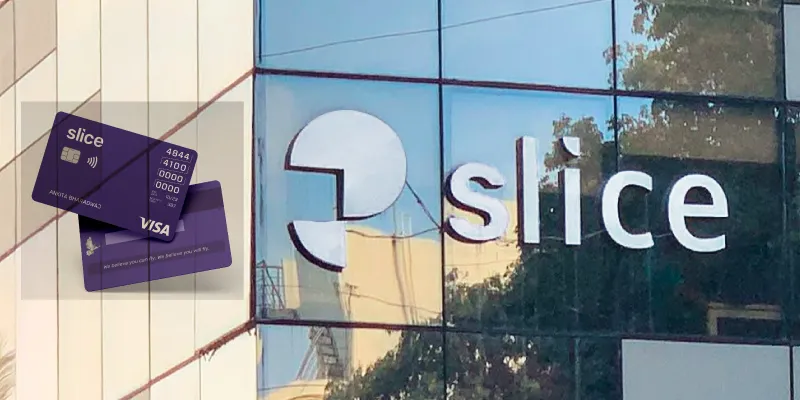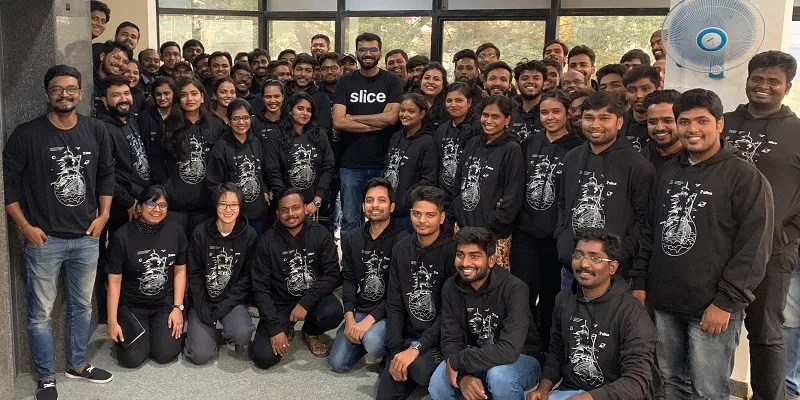How this fintech startup overcame COVID-19 challenges to see over 100 percent growth in 2020
Bengaluru-based Slice, which provides digital payment and financial credit services, is focused on providing credit to Gen Z and young millennials.
The COVID-19 pandemic exposed the stress of the financial services sector where institutions were wary of providing credit, while consumers sought a moratorium on payments. But this was not the situation for Bengaluru-based fintech startup , whose business grew by 125 percent in 2020.
Founded in 2016 by Rajan Bajaj, the startup provides digital payment and financial credit services focused on Generation Z and young millennials.
According to Slice, unlike other startups, it found a lot of positives during the pandemic. In fact, Slice saw its customers were increasingly relying more on their credit card for various kind of payments. Slice had introduced a physical card to its portfolio of products in May 2019, and in October last year, it partnered with Visa to introduce a zero fee feature credit card for its customers.

Rajan Bajaj, Founder and CEO, Slice, says, “Prior to COVID-19, our customers were largely relying on us for ecommerce transactions. But now, 50 percent of their monthly payments are happening through the Slice card.”
With around 3,00,000 customers, Slice has its presence in around 30 cities in the country as of now, and aims to extend it to 50 in the next one year.
Challenges and growth
According to Rajan, customers have now started using the Slice card for making payments in categories such as grocery shopping, ordering food, etc.
This has not been an easy feat for the startup as it had to face certain challenges during the lockdown period in 2020. From the time it launched a physical card in 2019, it recorded month-on-month growth of 25 percent in terms of customer additions, but all this literally came to a halt in March 2020.
However, Slice restarted operations after the lockdown restrictions were eased, and has currently provided around 1,25,000 cards.
“We are back on track despite losing the momentum for a few months in 2020,” says Rajan.
During the initial period of the lockdown last year, Slice was in a dilemma as to how it would face the challenges posed by the pandemic. Questions were raised around whether it would be prudent for the company to extend credit to its customers, especially when there was news of job losses or on-boarding of new users.
“We did have our fair share of discussion and decided that our customers needed us more than ever,” says Rajan.
Stringent selection process
What proved to be the biggest USP for Slice to tide over any possible delinquencies of credit payments was its stringent onboarding process where it onboarded only creditworthy customers. It also provides its cards to the student community.
Slice has got competition from other fintech startups such as KrazyBee, Fampay and even from the traditional banks which offer credit facilities.
Rajan says, “We have set the bar high to select our customers. Today, we have onboarded around 3,00,000 customers and 8,00,000 of them are on the waiting list.”
The stringent selection process largely focuses on the creditworthiness of any prospective consumer.

Slice Founder & CEO Rajan Bajaj
There was also apprehension on whether spending would dramatically come down during the pandemic. However, the spending patterns among its customers has now gone back to pre-COVID levels, and the startup is back on the high growth track.
“In the last couple of months, the biggest success for us was not the growth itself, but the cohort of customers who are spending more through us. Seeing this kind of adoption is very reassuring,” says Rajan.
The CEO of Slice strongly believes that the experience it provides to any prospective customer is also its strong point. These include the entire onboarding process, the ability to do most of the things on the app, solving for each problem through the digital funnel, product-market-fit, etc.
According to Rajan, Slice enjoys a net promoter score of above 70, which indicates customer satisfaction. “Seventy five percent of our customers come through reference and this is happening at scale,” he remarks.
The average age of customers at Slice is around 22-23 years, and around 60 percent of them are employed. It also has strong traction with the student community where it provides to lower credit limit with an aim that it would grow along with them once they are employed.
“We give the students an opportunity to build their credit history, which would be very useful in the future,” says Rajan.
Aiming higher
At present, Slice is registering an annualised gross transaction volume (GTV) of around Rs 1,600 crore ($222 million) approximately. Rajan says, “We have grown by 100 percent from where we were pre-COVID.” The startup aims to touch $500 million GVT in 2021.
Rajan says, “The focus is on scaling where we are looking at a million customers in next 12-15 months and aim at higher NPS score.”
Towards this goal, Slice plans to undertake a few strategic initiatives. It plans to introduce UPI payment option on its platform, increase focus on rewards and offers for customers, relevant partnerships for its kind of customer base, investment and saving features on its app, etc.

Slice team
To keep pace with the customer growth, Slice is actively growing its team and plans to double its workforce in 2021, with a major focus on engineering and product teams.
The startup also has its own NBFC licence, which provides credit to customers besides having a partnership with other financial institutions for raising debt. Rajan says Slice is now looking to raise money from capital markets during the later part of the year.
Slice is backed by VCs such as Gunosy Capital, Das Capital, Finup, Blume Ventures India, , EMVC, Tracxn Labs, Better Capital, Sachin Bansal’s Navi, alongside angel investors such as Kunal Shah. It has raised $33 million till now.
“For us, the biggest success was not just growth, but the cohort of our customers,” says Rajan.
Edited by Megha Reddy










